|
Northern Gannet (Morus bassanus)
(aka Gannet Sula bassanus) |
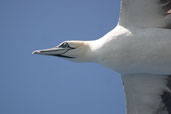 |
Scotland
The Gannet breeds in large colonies on the coast and islands of north-west Europe with a few colonies in North America around
Newfoundland. When not breeding, they spend their time out at sea in the North Atlantic and south to waters off West Africa. See the distribution map
at xeno-canto.
|
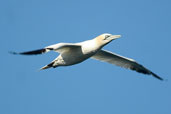 |
They are closely related to the more tropical boobies who possibly got their name from the fact that they were
daft enough to let hungry sailors walk up to them and hit them over the head.
They are large birds about 1 metre long with a wingspan of around 1¾ metres.
|
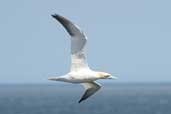 |
They nest in very large colonies called gannetries on isolated stacks, uninhabited islands or on steep cliffs
where they are unlikely to be disturbed by humans or other predators. Gannetries have been mentioned in ancient manuscripts so, with regard to the 12
Scottish gannetries, we know that, for example, gannets have bred on St Kilda since before the 9th century, on the Bass Rock (which gave the specific
name of bassanus) from before 1521 and on Ailsa Craig before 1526. |
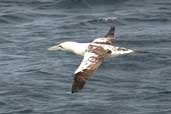 |
Gannetries continue to spread. First known breedings on
Noss, Shetland were in 1914, on Hermaness, Unst in 1917, Fair Isle in 1974, Foula, Shetland in 1976 and the Shiants in 1984.
Numbers are huge. The largest colony with 19% of the world's
population is on St. Kilda with over 60,000 pairs recorded in 1994. The Bass Rock has around 40,000 pairs.
|
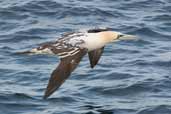 |
Gannets take about 4 years to reach adult plumage. Photos
4 and 5 show sub-adult plumage, probably 3rd-summer birds. Although not breeding yet these birds can be seen around breeding colonies whereas younger
birds tend to stay out at sea all year round. |
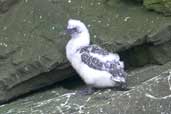 |
The 6th photo shows a nestling or "guga". Eggs
and gugas were a major source of food for islanders such as the St Kildans in the recent past. |
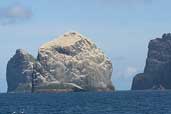 |
The 7th and 8th photos show two of the Scottish
gannetries. The first shows the sea-stacks of Stac Lee and Stac an Armin off the larger but uninhabited island of Boreray in St Kilda. The second
shows a small stack near Muckle Flugga off the coast of Hermaness, Unst, Shetland. |
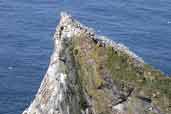 |
|
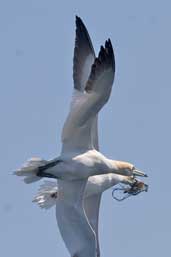 |
These next 4 photos show some gannets squabbling over
nesting material which, it has to be admitted, is in pretty short supply near this gannetry at Sula Sgeir in the North Atlantic. |
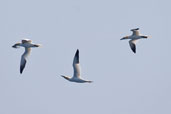 |
|
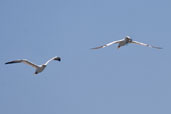 |
|
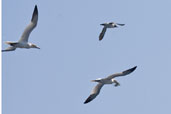 |
|
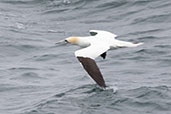 |
|
|
|












